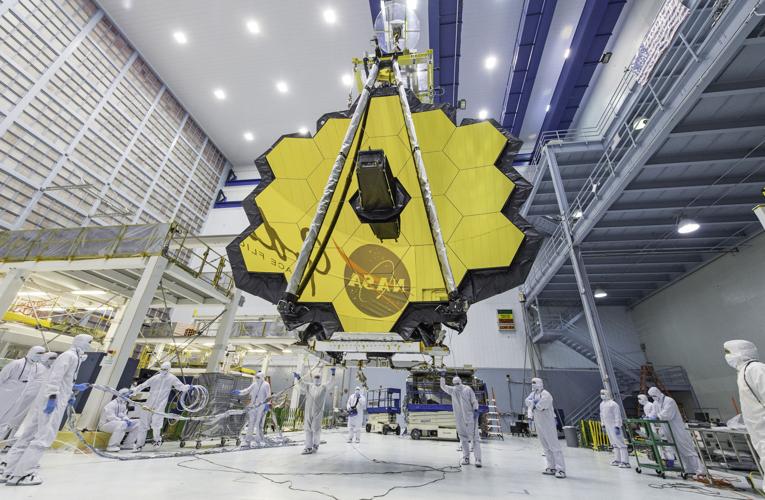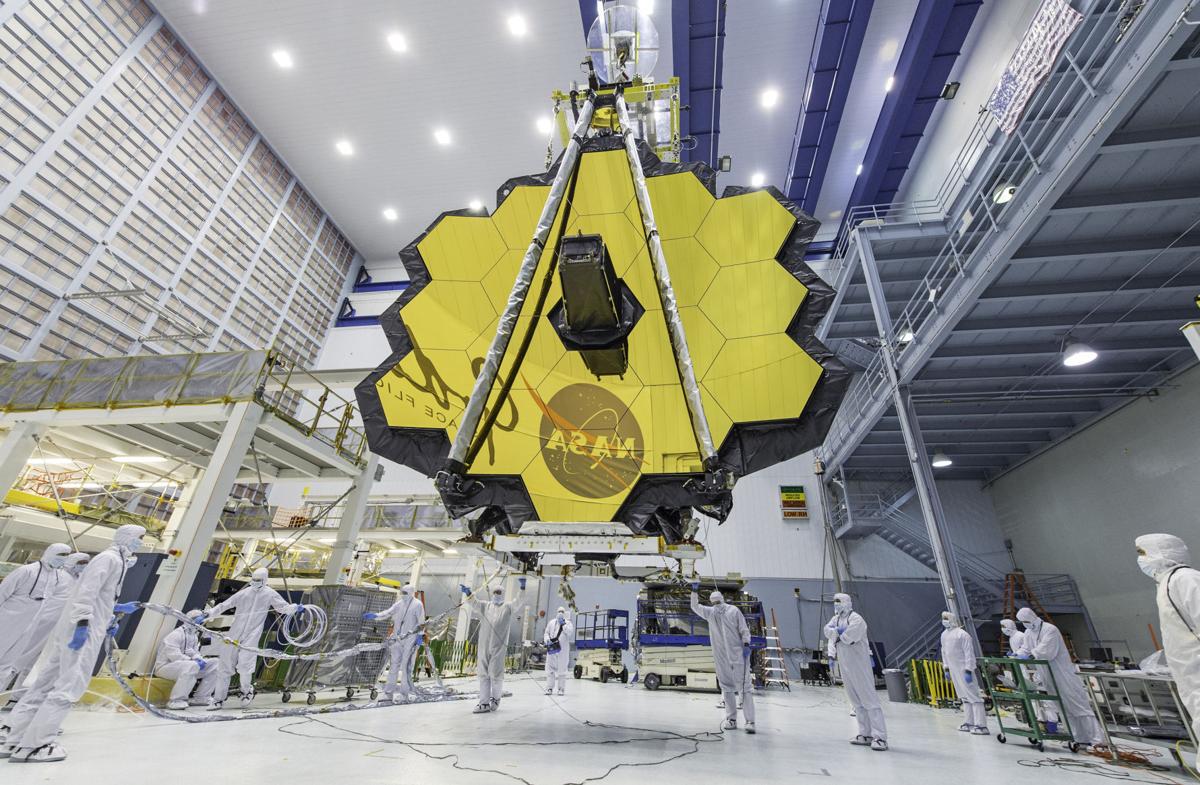The James Webb Space Telescope, Hubble’s soon-to-be successor and the world’s most advanced space observatory, has been locked in a cryogenic chamber at Johnson Space Center in Houston since the spring.
Marcia Rieke, regent’s professor of astronomy at the University of Arizona and the principal investigator for the telescope’s near-infrared camera, was with her team and the telescope during part of the cold and vacuum testing at the space center when Hurricane Harvey engulfed the city for days.
Rieke and the telescope emerged from the storm unscathed and on schedule, but not without some close calls.
Hurricane Harvey made landfall in Houston on Aug. 25. Rieke flew into George Bush Intercontinental Airport from Dallas the next day.
“The pilot came on before we took off and said, ‘We’re keeping track of the spiral arms (of the hurricane), and we’re going down through a clear spot,’ ” Rieke said. “I thought, ‘What have I got myself into?’ ”
The telescope, including all four imaging instruments of which the near-infrared camera is one, were tested in the space-like conditions of Chamber A, the same chamber the Apollo spacecrafts were tested in.
Rieke and her team analyzed the telescope’s performance on their laptops under tarped and leaky ceilings and to the blaring weather alerts on their phone every couple of hours, Rieke said.
“There were a couple days we were getting a little tired of eating stuff out of cans,” but that was the worst of it for them.
The places hit hardest were along the coast, rivers and reservoirs. Johnson, while at a low elevation, is far enough away from a water source to keep most of it from flooding. Just the front gate was inaccessible because of flooding, so the scientists took back gates instead.
“The telescope was probably in the safest place possible,” Rieke said.
But the most stressful moments were when they were close to running out of liquid nitrogen to keep the chamber cold. The supply truck was delayed because of the flooding around the city.
Luckily the truck pulled up just in time. Any later, and the team would have had to start warming up the telescope, delaying testing by a few weeks.
Rieke was able to safely leave Houston without delay Aug. 31.
Once in space, the new telescope will park itself 1 million miles away in Lagrange point 2, where it will stably orbit the sun.
The four science instruments on board will be shielded from the heat of the sun and Earth with a sun shield that will unfurl once in space.
The telescope will start observing six months after reaching its destination. But, Hubble isn’t going anywhere just yet. It will continue to observe the sky until it can’t any longer.
The Webb space telescope was designed to see redder objects than Hubble, giving it access to the first galaxies and stars that formed in the early universe. The telescope will allow astronomers to study the formation of galaxies, something still not completely understood.
Astronomers will also be able to peer behind the curtains of gas and dust that are opaque to visible light to see the birth of stars and study the atmospheres of planets in other stellar systems and objects within our own solar system.
The test was important because it’s the last time the instruments will be tested in the super-cold vacuum of space, and the first time the telescope and instruments were together.
Before this, there were multiple shake-tests to see if the telescope can withstand the violence of launch.
On Monday, scientists at Johnson Space Center began the slow process of warming the chamber.
Sometime around Thanksgiving, the telescope is scheduled to be shipped to Northrop Grumman Aerospace Systems in Redondo Beach, California, where it will be attached to a spacecraft for launch and vibration testing.
The telescope is an international collaboration between NASA, the European Space Agency and the Canadian Space Agency and is named after former NASA administrator James Webb. It is scheduled to launch from the spaceport at Kourou, French Guiana, in October 2018.







